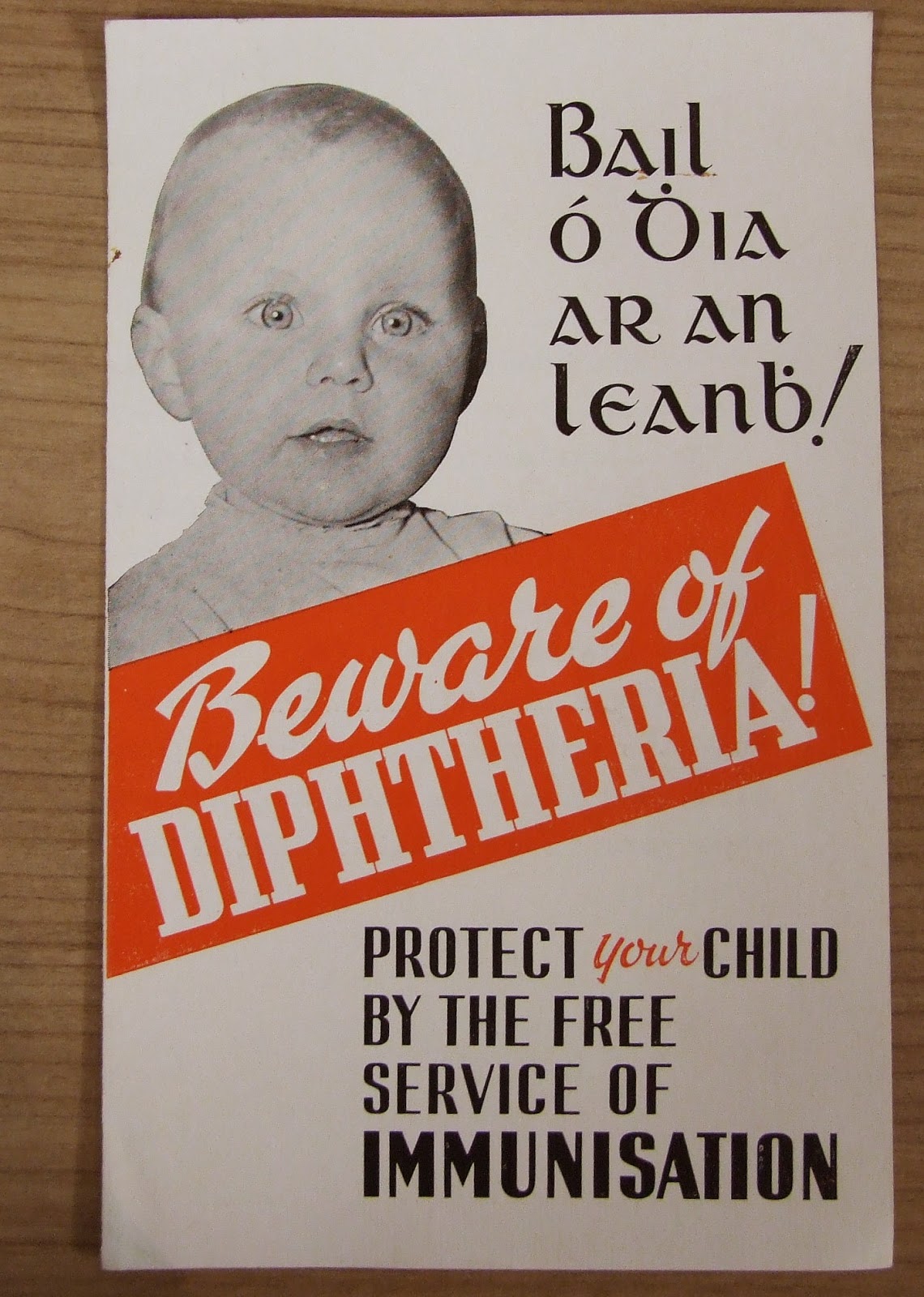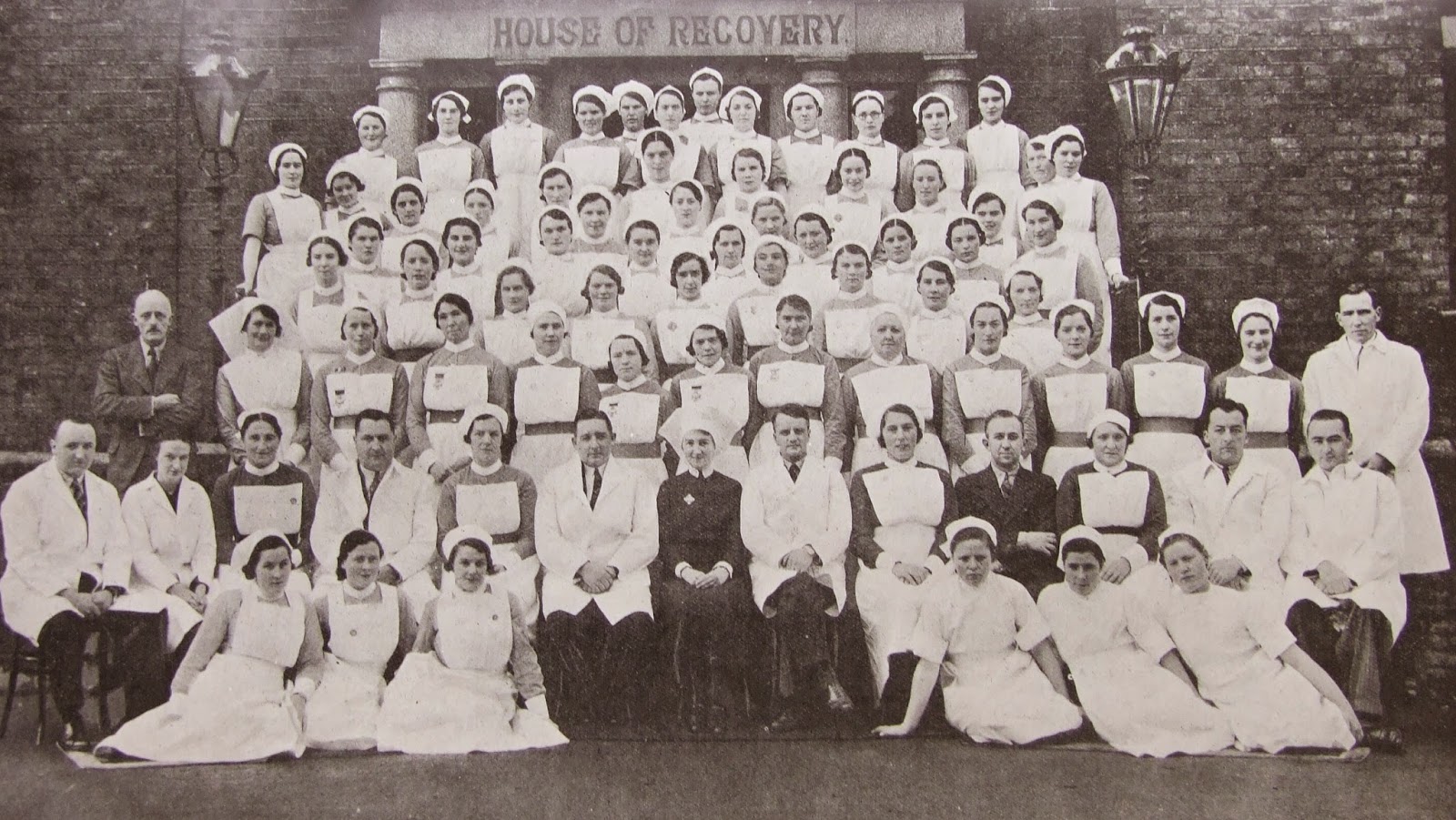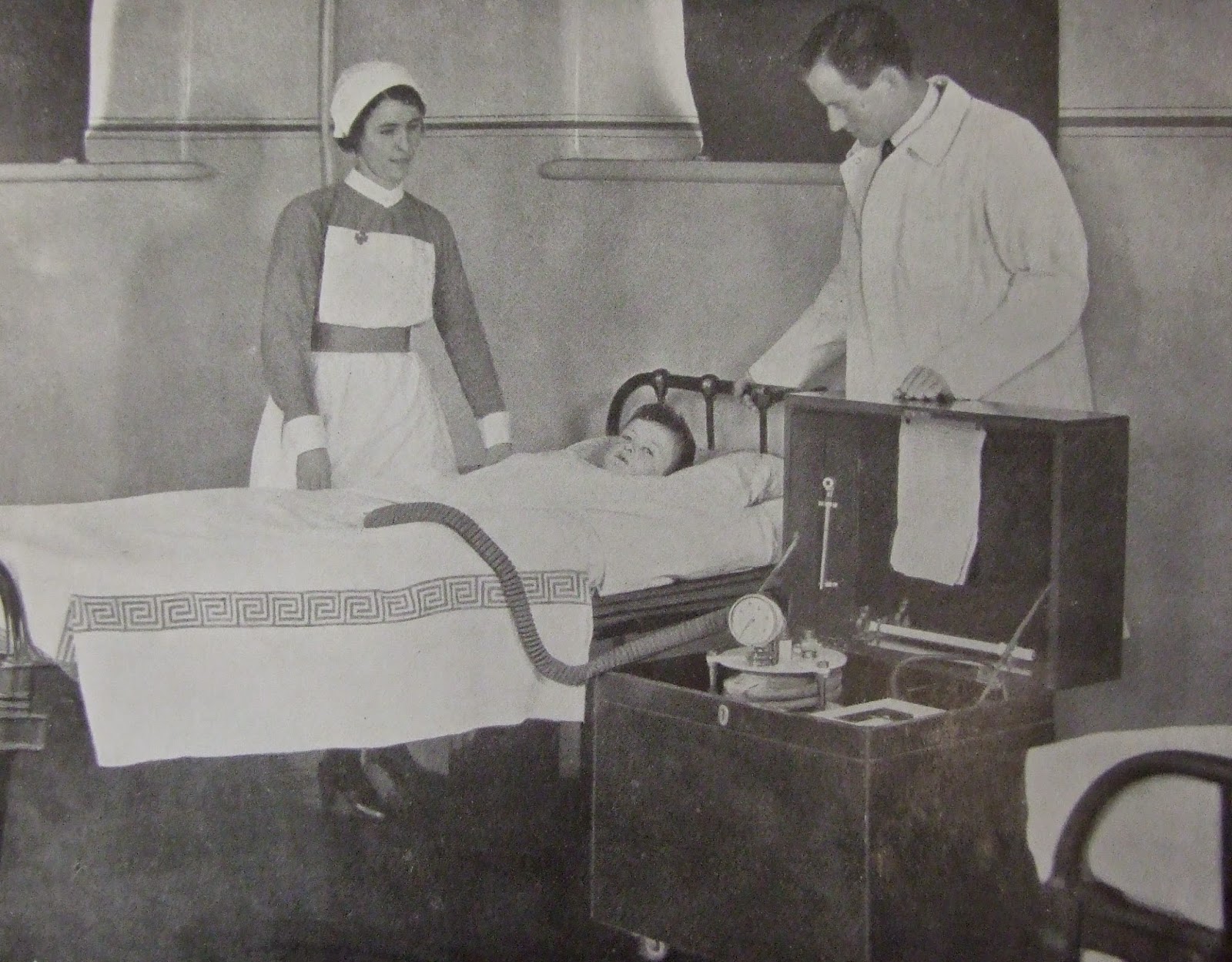The campaign against diphtheria in Cork Street Fever Hospital, 1934-1952
 |
Leaflet promoting a diphtheria immunisation scheme,
collected by Dr McSweeney (CSFH/3/1/4/5)
|
In 1934, Dr CJ McSweeney became Medical Superintendent of Cork Street Fever Hospital, Dublin,
a position he retained until his death in 1953. Dr McSweeney, who had
previously worked in the City Isolation Hospital in Cardiff, came to a city
with a large slum population and a high incidence of infectious fevers.
A progressive physician who was a strong proponent of preventative measures and
use of therapeutic aids, Dr McSweeney devoted much time in the first decade in
Cork Street to the fight against diphtheria of the ‘gravis’ type, which claimed
the lives of thousands of children in Dublin in the early twentieth century.
Diphtheria
in Cork Street, 1934-1946
Dr McSweeney’s annual medical
reports, which form part of the Cork Street Fever Hospital archive held in the
Royal College of Physicians of Ireland, are excellent sources which show
diphtheria admission and mortality statistics in the hospital. In the years
following Dr McSweeney’s appointment, diphtheria accounted for a large
proportion of patient admissions to the hospital. Dr McSweeney noted in 1934
that the ‘gravis’ type of diphtheria prevailing in Dublin was much more
virulent that that occurring in many areas in Ireland and the UK, and case
mortality was therefore higher. The following table demonstrates the diphtheria statistics from 1934 to 1946:
|
|
Number of patients admitted
|
Number of patients who died
|
|
1934
|
746
|
70
|
9.4%
|
1935
|
721
|
59
|
8.18%
|
1936
|
636
|
80
|
12.57%
|
1937
|
648
|
59
|
9.1%
|
1938
|
685
|
61
|
8.9%
|
1939
|
656
|
46
|
7%
|
1940
|
585
|
38
|
6.5%
|
1941
|
438
|
39
|
8.9%
|
1942
|
581
|
32
|
5.51%
|
1943
|
836
|
44
|
5.08%
|
1944
|
927
|
24
|
2.43%
|
1945
|
747
|
18
|
2.41%
|
1946
|
431
|
13
|
3.02%
|
Although the number of patient
admissions remained high during these years, the introduction of a mass
immunisation scheme by Dublin Corporation in 1940 resulted in a progressive
decline in mortality rates. Many fatal cases involved children under 10 years
old who had contracted diphtheria a few days previously. A large proportion of
these patients died within 24 hours of admission, a fact that was frequently
decried by Dr McSweeney. In the 1943 Medical Report, Dr McSweeney lamented
that:
‘These
inevitably fatal cases were all victims of the optimistic philosophy which is
part of our national character, a frame of mind which expects even mortal
illness to become less serious on each successive day’.
 |
| Photograph of members of staff and some members of the Managing Committee of Cork Street Fever Hospital, 1935. Dr McSweeney is seated in the second row, sixth from the right (CSFH/1/3/4/1) |
Dr McSweeney
and the Diphtheria Immunisation Campaign
In the first few years of his time as
Medical Superintendent, Dr McSweeney regularly wrote about the need for a mass diphtheria
immunisation programme in his annual medical reports. In the 1938 report, he
noted that 61 deaths from diphtheria had occurred in the hospital during the
year, a figure representing 35% of total mortality. In Dr McSweeney’s view,
these deaths were ‘all preventable and in
an enlightened community would not occur’. The remedy was ‘immunisation of all children as soon as
they attain their first birthday, followed by re-inoculation, if found
necessary, before they begin school life’.
Dr McSweeney’s wish became reality in
1940, when the Government introduced a diphtheria immunisation scheme in Dublin
in connection with wartime evacuation schemes for children organised by the
Department of Defence. However the scheme was not compulsory for all children,
and the failure of some parents to have their children inoculated attracted the
ire of Dr McSweeney. In 1941 he wrote that ‘it
is disheartening in the extreme to realize the indifference which parents
display towards the only effective method of coping with this preventable
disease’.
The early immunisation schemes were
not without their complications, which were recognised by Dr McSweeney a year
later in 1942. In his medical report for the year, Dr McSweeney stated that of
the 127,000 children inoculated against diphtheria in Dublin during the
previous 10 years, approximately 35% had been treated by the ‘one shot’ method
now regarded as unreliable. After a period of 5-7 years some children immunised
in this way became susceptible again; 137 of 594 patients with diphtheria
admitted in Cork Street in 1942 had given a previous history of receiving a
full course of diphtheria prophylactic.
However, Dr McSweeney noted in the following year’s report that diphtheria
rarely killed a child who had had even one course of injections.
He continued to be a firm advocate of the immunisation programme, now modified
to consist of the administration of two injections of alum precipitated toxoid
(APT) or three injections of toxoid antitoxin floccules (TAF).
Although diphtheria admissions remained
high between 1942 and 1946, the case fatality rate reduced year on year. In
1943 Dr McSweeney noted that the greater incidence of the disease had been
mainly among adolescents and adults, who very rarely died from it. During Dr
McSweeney’s years in Cork Street, the vast majority of deaths from diphtheria
were in the under-10 age group.
 |
| Post Diphtheric Paralysis being treated with the Bragg-Paul Pulsator, Cork Street Fever Hospital, 1935 (CSFH/1/2/1/8) |
The Decline
of Diphtheria, 1947-1953
In 1947 admissions of patients
suffering from diphtheria in Cork Street declined greatly, down to 179 from 431
the year before. There were just 2 deaths from the 179 admissions. Each year from
1948 to 1951 witnessed a progressive reduction in admissions, with no deaths
from diphtheria. In 1952 there were no admissions of diphtheritic patients, and
in the 1953 medical report there is no mention of diphtheria at all.
Year
|
Number of patients admitted
|
Number of patients who died
|
Case mortality rate
|
1947
|
179
|
2
|
1.12%
|
1948
|
104
|
0
|
-
|
1949
|
28
|
0
|
-
|
1950
|
4
|
0
|
-
|
1951
|
5
|
0
|
-
|
1952
|
0
|
0
|
-
|
Dr McSweeney noted in his 1948 report
that the year gone by was the first in sixty years in which no death from
diphtheria had been recorded in Cork Street. He stated that ‘although
immunisation on a large scale has helped to produce this favourable state of
things, it must be conceded that the decline in virulence of the causative organism
– a cyclical phenomenon – has been a causative factor’. He concluded that ‘it
is probable that diphtheria will remain a minor public health problem in this
city for several years provided that the present practice of immunisation is
maintained’. His
conclusions were correct, and the last diphtheria case (and death) in Ireland
occurred in 1967.
Fergus Brady,
Project Archivist